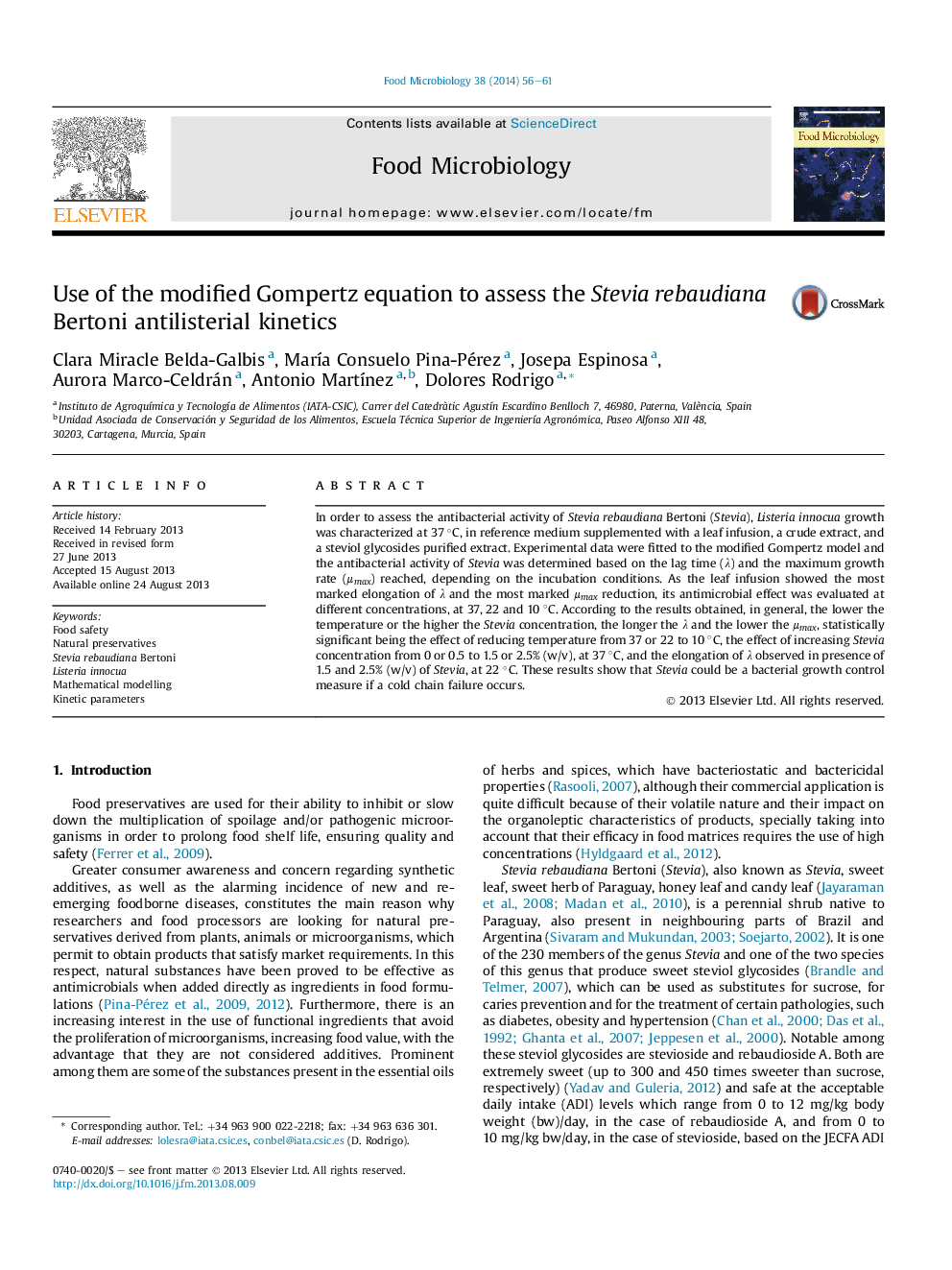| Article ID | Journal | Published Year | Pages | File Type |
|---|---|---|---|---|
| 4362918 | Food Microbiology | 2014 | 6 Pages |
•The antibacterial activity of various Stevia extracts was mathematically assessed.•The studied extracts were a leaf infusion, a crude extract and a purified extract.•Leaf infusion showed the major bacteriostatic effect against Listeria innocua.•The infusion activity proved to be dependent on temperature and concentration.•Stevia could be use as a sweetener and a preservative to novel foods and beverages.
In order to assess the antibacterial activity of Stevia rebaudiana Bertoni (Stevia), Listeria innocua growth was characterized at 37 °C, in reference medium supplemented with a leaf infusion, a crude extract, and a steviol glycosides purified extract. Experimental data were fitted to the modified Gompertz model and the antibacterial activity of Stevia was determined based on the lag time (λ) and the maximum growth rate (μmax) reached, depending on the incubation conditions. As the leaf infusion showed the most marked elongation of λ and the most marked μmax reduction, its antimicrobial effect was evaluated at different concentrations, at 37, 22 and 10 °C. According to the results obtained, in general, the lower the temperature or the higher the Stevia concentration, the longer the λ and the lower the μmax, statistically significant being the effect of reducing temperature from 37 or 22 to 10 °C, the effect of increasing Stevia concentration from 0 or 0.5 to 1.5 or 2.5% (w/v), at 37 °C, and the elongation of λ observed in presence of 1.5 and 2.5% (w/v) of Stevia, at 22 °C. These results show that Stevia could be a bacterial growth control measure if a cold chain failure occurs.
